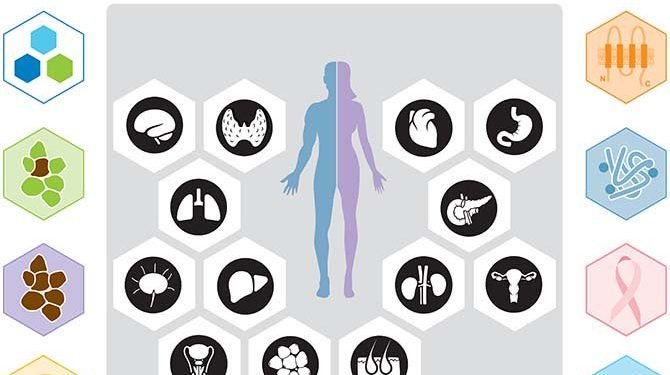Human Protein Atlas
The human protein atlas is a database of proteins that are involved in many important biological processes. Some of these proteins are important for embryonic development, such as the erythroblast transformation specific domain-containing protein Elk-1. Others are involved in cellular signaling pathways such as the Ras-Raf-MAPK cascade. This database also includes a variety of novel proteins. Some of these proteins are also important for our health.
Cell Atlas
The Human Protein Atlas (HPA) is an online database of protein expression profiles from the human body. It has been designed to improve the understanding of protein subcellular localization and function. To this end, the HPA Cell Atlas has hosted a competition aimed at identifying subcellular localization patterns. In the competition, 42,774 nonpublic images were used to classify the proteins in these cells. The images are multicellular and have four channels for the protein of interest and cell outlines.
The human proteome is made up of proteins, which are the building blocks of life. Understanding the distribution of these proteins will help researchers better understand how proteins function in health and disease. The ultimate goal of human genome sequencing is to understand the dynamic expression of protein-coding genes and develop a map of the human proteome. However, this process has been very challenging and requires a large amount of data. The Human Protein Atlas Cell Atlas will help researchers make progress in this area.
To create this comprehensive map, the Human Protein Atlas facility developed a proprietary software tool to provide a comprehensive repository of proteins. With a database of over 48,00 antibodies and expertise from more than 100,000 immunostainings, the Human Protein Atlas can be used to understand the spatiotemporal distribution of proteins in human cells. Researchers can study a protein of interest in any cell type and under various conditions. The tool allows for highly multiplex imaging of up to 30 markers using barcoded antibodies.
Immunohistochemistry
The Human Protein Atlas is an online database that contains information on protein expression in normal and diseased human tissues. The data are based on immunohistochemistry and antibody-based protein profiling. The database also provides high-resolution images of immunohistochemistry stained normal tissues and knowledge-based annotation of protein expression levels. This tool can be used for biomedical research, disease-specific studies, and drug discovery.
The Human Protein Atlas is a database of more than 5 million images of immunohistochemically stained cells and tissues. For example, researchers can explore the expression of SOCS proteins in breast cancer cells. The database defines the expression level of SOCS proteins as low, medium, or high. This database can be a valuable resource for biomedical researchers, as well as for students, postdocs, and others.
The atlas contains a summary page listing the protein profiles of different cancers. Most cancer types have 12 patients each. The color-coded profiles indicate intensity of immunoreactivity. Each colored circle represents a specific tumor. The resulting information is used to improve clinical diagnosis and treatment. However, the data should be used with caution. The protein atlas should only be used in conjunction with other diagnostic tools.
The Human Protein Atlas program was launched in 2003, funded by the non-profit Knut and Alice Wallenberg Foundation. The program involves research groups at several universities across Europe. It has included international collaborations with South Korea and China. Mathias Uhlen, the director of the program, says the Human Protein Atlas project has contributed to nine EU research projects. It has received numerous awards and grants. There are several sections of the database, which includes complementary information about all human proteins.
Cell Profiling group
The human protein atlas cell profiling group has developed a method for cell identification by immunohistochemistry. The method involves using antibodies against a particular protein found in different tissues. Some of the proteins in the human protein atlas cell profiling group are only found in certain cells, and the exact function of these proteins is not known. The protein’s immunoreactivity can therefore be helpful in the identification of diseased or abnormal cells.
The human protein atlas cell profiling group has recently published the results of a large-scale immunohistochemical analysis of over 30 cell lines. This project was designed to facilitate dialogue between scientists and to identify proteins with questionable staining patterns. These data will allow the group to exclude crossreactive antibodies from their database. The data generated by this project are complemented by a number of other ‘omics studies.
The human protein atlas cell profiling group uses a variety of methods to identify proteins in various tissues. In addition to using immunohistochemistry, the group has produced a large RNA-Seq database. The database contains protein expression data from 32 histologically normal human tissues and 95 individuals, as well as two biological replicates of each tissue. The data was processed using coherent computational pipelines and systematic laboratory workflows.
Recombinant protein epitope signature tag (PrEST) as antigen
The recombinant protein epitope signature tag, or PrEST, is a fusion protein that is produced in Escherichia coli and contains heavy isotope-labeled amino acids. After purification, the PrEST is analyzed by mass spectrometry and the amount of PrEST added to biological samples is known.
The PrEST sequence is fused to the 6xHis tag, a solubility tag derived from the albumin-binding domain of streptococcal protein G. Currently, the PrEST library contains more than 30,000 PrESTs, corresponding to more than 18300 human genes. It can be used to quantify protein expression by comparing PrEST peptides with their endogenous counterpart.
The Human Protein Atlas is a database that maps the spatial distribution of proteins in cells and tissues. The database integrates with other genomic and proteomic strategies to create a comprehensive spatial map of all human protein-coding genes. The Atlas also maps proteins to their neighboring cells and cell types. The Atlas also enables the detection of proteins that are up-regulated in certain cell types and cancer tissues.
This database is a useful resource for researchers. It combines gene expression data from TMAs with protein expression data from 15297 protein-coding genes. It also enables unbiased identification of prognostic genes, which are grouped into unfavorable and favorable categories. Its comprehensive histology-based annotation of protein expression levels is particularly useful for cancer researchers.
Results of validation of in-house antibodies
In-house antibody validation is becoming increasingly important for researchers who want to improve their own methods for testing and reproducing their antibodies. While most commercial antibodies do not meet the new standards, it is advisable to try to validate in-house antibodies if possible. For instance, gene-knockout labs often do not have mass spectrometry capabilities and may prefer to use in-house antibodies that have been validated by others.
During this process, the investigator checks the specificity and reproducibility of the antibodies. In addition, they also check the subcellular localization of the antibodies and the expression of the target protein. This is important as the validation process can help determine the optimal dilution for the antibodies. By performing the validation, investigators can ensure that the antibodies are able to effectively target and treat their targets. The data that emerges from the validation process can then be used to optimize in-house antibodies.
The most important step in the validation process is to confirm that the antibody is suitable for the intended use. The antibody must not only detect the antigen but also perform well in the intended application. Moreover, it must be consistent, ensuring that the results are reproducible. This is done by performing multiple tests with different antibody pairs. If the antibody is able to detect the target with 100% specificity, it will be ready for commercialization.
Reliability scores for the human protein atlas
The Human Protein Atlas is a database of all human proteins in open-access format. The Atlas is composed of three sub-atlases and relies on highly sensitive antibodies to map protein expression profiles in human tissues. These antibodies are subject to a rigorous validation process against carefully selected sample materials to ensure their accuracy and replicability. However, the database cannot guarantee that each gene’s protein expression level is correct.
The Human Protein Atlas contains thousands of images of histological sections of cancer and normal tissues. Each antibody is labeled with 3,3′-diaminobenzidine, a brown staining agent. The sections are counterstained with hematoxylin to provide a detailed view of microscopical features. The Atlas also contains tissue microarrays that demonstrate antibody staining in samples from 144 individuals and 20 cancers. Each array contains 576 images of each antibody.
The Human Protein Atlas was founded in 2003 and is funded by the non-profit Knut and Alice Wallenberg Foundation. The program is based at the Royal Institute of Technology in Stockholm and involves several research groups in the country and abroad. Since its inception, it has collaborated with researchers in China, South Korea, and Europe. Mathias Uhlen, director of the Human Protein Atlas program, has received several EU research projects.


















